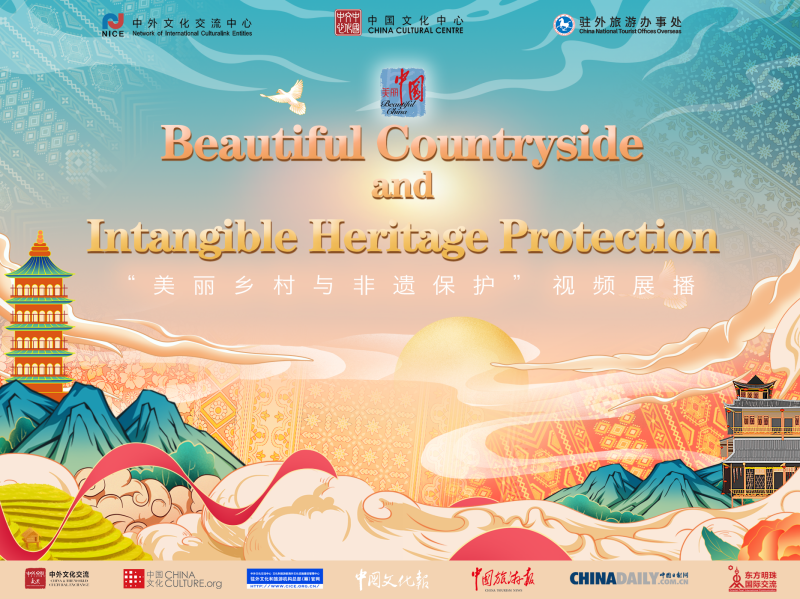The beauty of the countryside exists in the picturesque natural scenery and the rich folk customs inherited from generation to generation. There are ancient handicrafts, myths and fairy tales passed down orally, and traditional music, drama and time-honored production and customs. These intangible cultural heritages carry the cultural memory of all ethnic groups, and they are the spiritual spirits worth protecting.
The video series “Beautiful Countryside and Intangible Cultural Heritage Protection” selects five beautiful villages from China - Qingyang in Gansu, Leishan in Guizhou, Huayuan in Hunan, Nimu in Tibet and Fugong in Yunnan, and introduces their new stories that are full of life with the efforts of inheritors and protectors. Ancient Chinese poets said the place that made them feel at ease was their hometown. The beautiful countryside now is becoming the dream land for more and more urbanites.
乡村之美,在于如诗如画的自然风光,在于世代传承的多彩民俗。这里流传着古老的手工技艺、口耳相传的神话故事,演绎着传统的音乐、戏剧和历史悠久的生产、生活习俗。这些非物质文化遗产承载着各民族的文化记忆,是值得人类共同守护的精神家园。
“美丽乡村与非遗保护”视频展播项目精选来自中国各地的5个美丽乡村——甘肃庆阳、贵州雷山、湖南花垣、西藏尼木和云南福贡,介绍它们在传承者和保护者的努力下焕发勃勃生机的当代故事。中国古代的诗人说,此心安处是吾乡。今天的美丽乡村正成为越来越多现代都市人梦想中的故土桃源。
Qingyang, Gansu
Qingyang boasts a long history and a splendid local culture. It features the magnificent North Carved Temple and a unique tradition of shadow puppetry.The fragrance pouches of Qingyang also enjoy widespread popularity.The skilled craftsmen of Gansu work on these bags, combining creative fashion with Intangible Cultural Heritage (ICH) craftsmanship, thereby giving new life to traditional handicrafts.


Leishan, Guizhou
Leishan is the cultural center of the Miao people. The people here are consummate craftsmen and forge delicate Miao silver ornaments. They also excel at singing and dancing. At festivals, they dance to the wind instrument lusheng and bronze drums while singing Miao songs.
Huayuan, Hunan
Huayuan traditional Miao embroidery is produced by a complex process. Every detail is imbued with Miao wisdom. Miao embroidery features diverse techniques, bright colors, and stylistic designs. Their common themes include flowers, birds, butterflies, dragons, and phoenixes, which represent Miao legends and creation myths as well as wishes for a better life.


Nyemo, Tibet Autonomous region
In Tibetan, Nyemo means "ears of wheat", a symbol of wishes for a good harvest. It is also the birthplace of Tibetan culture. Along with the spread of the Three Wonders of Nyemo and other aspects of Tibetan culture, the legacy of the ancient wisdom here is carried on for future generations.
Fugong, Yunnan
Fugong hand-made costumes are created using traditional weaving techniques. Distinctive designs, vibrant colors, and diverse patterns, have made them extremely popular. These costumes not only pass on ICH skills, but also constitute an emblem of the culture of Fugong and the elegance of its people.



